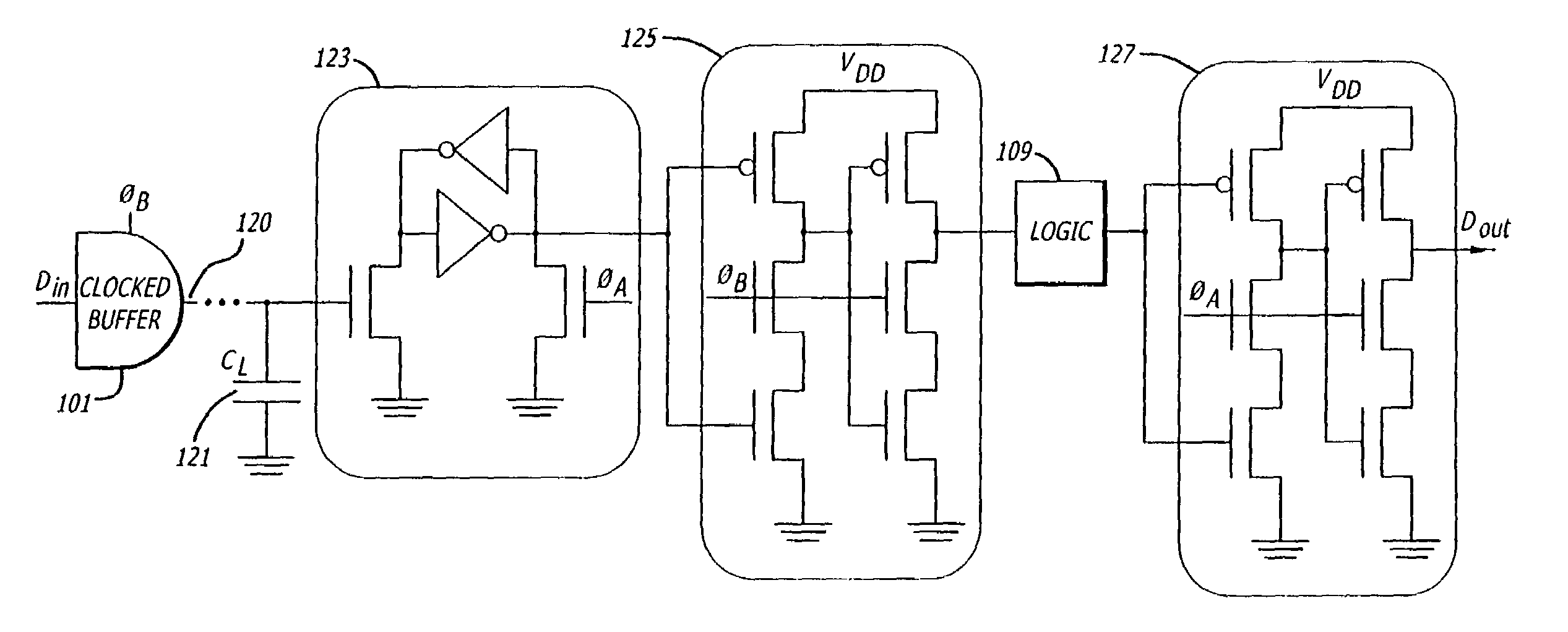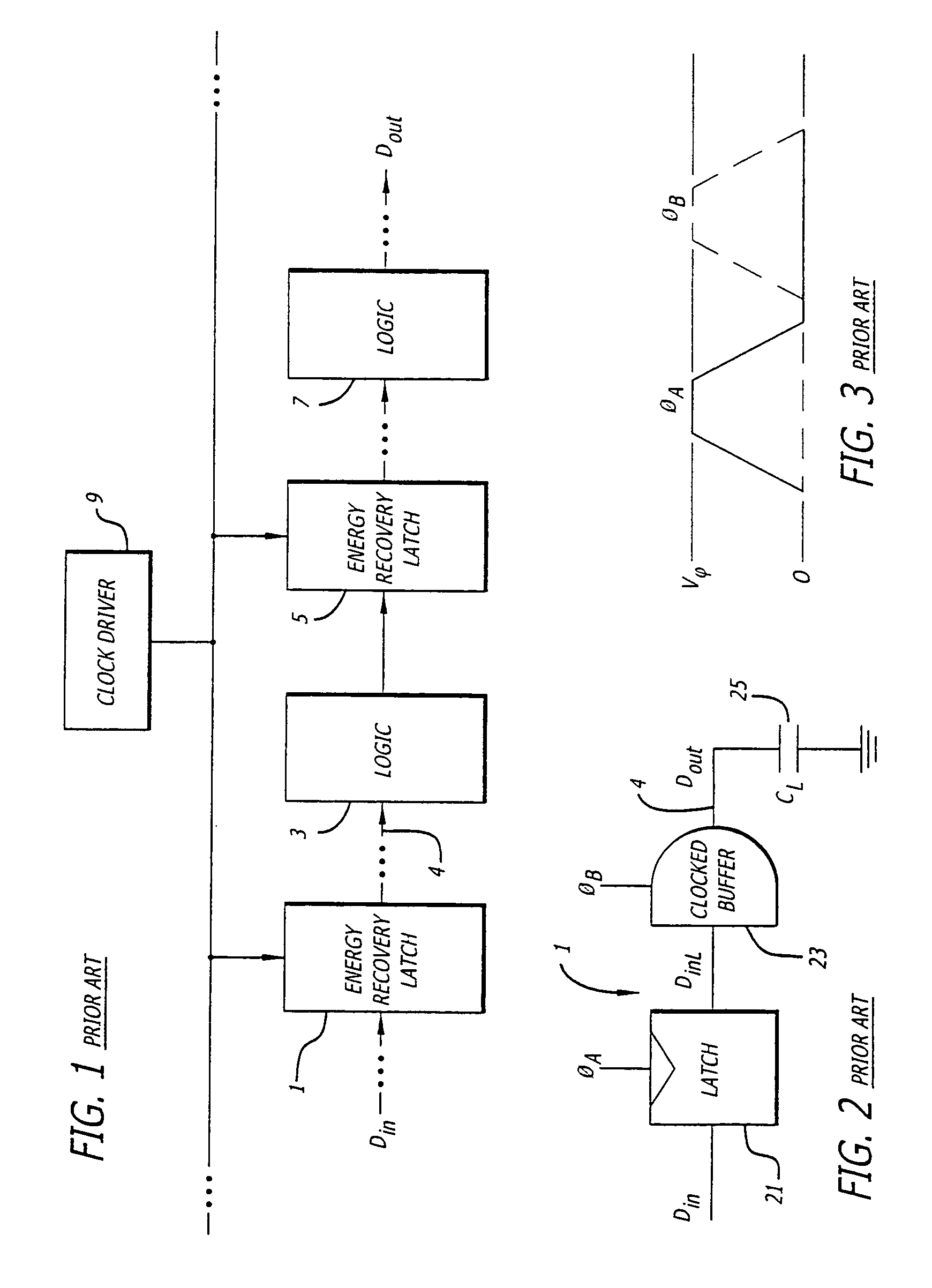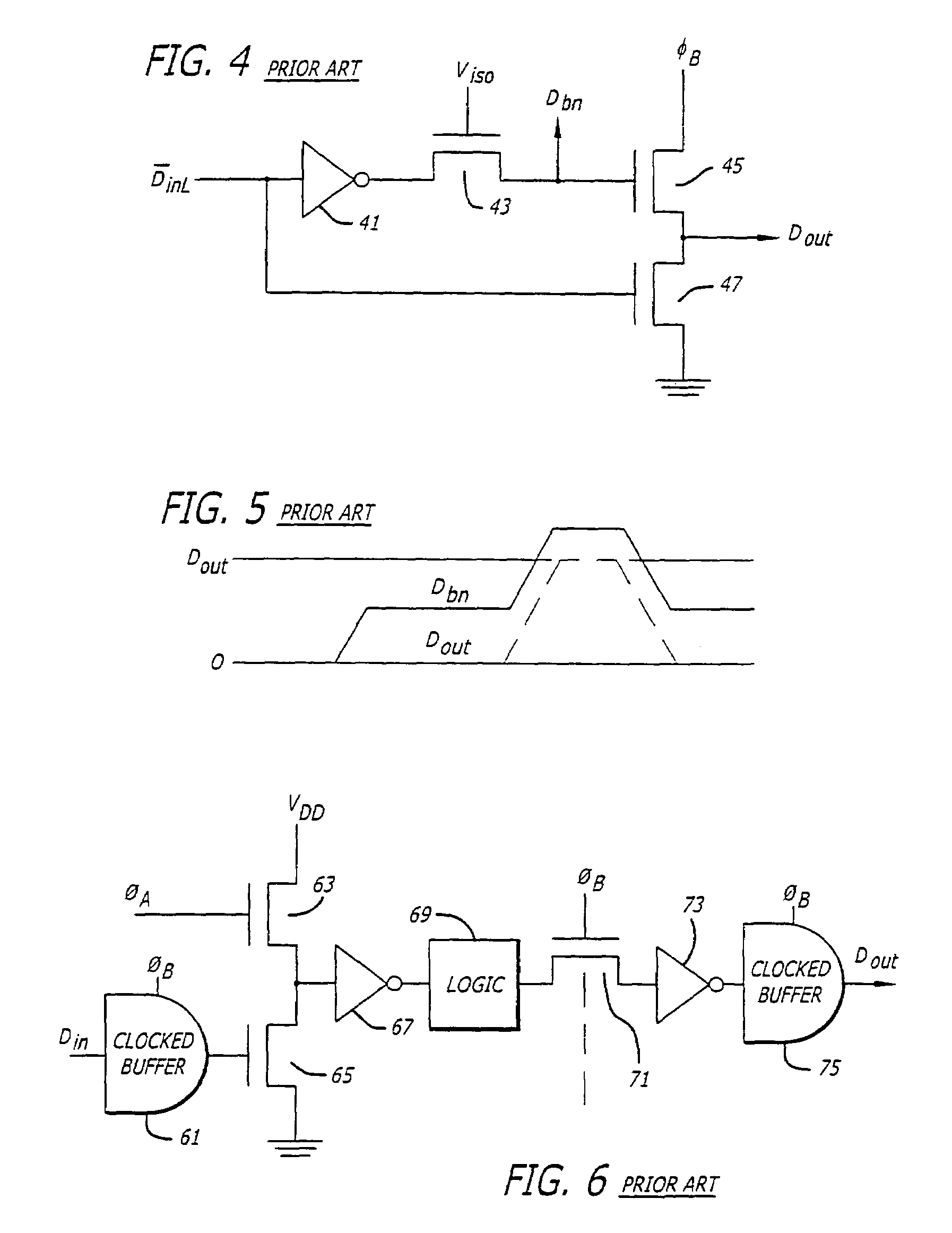High-performance clock-powered logic
a clock-powered logic and clock-powered technology, applied in logic circuits, pulse techniques, reliability increasing modifications, etc., can solve the problems of reducing the speed at which logic circuitry can be clocked, imposing substantial capacitance, and corresponding substantial energy loss, so as to reduce the stress on digital circuitry components, reduce energy consumption in digital systems, and increase the speed at which digital systems can operate.
- Summary
- Abstract
- Description
- Claims
- Application Information
AI Technical Summary
Benefits of technology
Problems solved by technology
Method used
Image
Examples
Embodiment Construction
[0046]FIG. 1 is a block diagram of the architecture of a typical prior art clock-powered logic system.
[0047]As shown in FIG. 1, the digital signal to be processed, Din in this example, is delivered to an energy recovery latch 1. The output of the energy recovery latch 1 is delivered to digital logic 3.
[0048]Digital logic 3 represents the digital logic that processes the signal received from the energy recovery latch 1, typically over a long signal line, such as signal line 4.
[0049]The output of the digital logic 3 is delivered to a second energy recovery latch 5. The output of the second energy recovery latch 5 is delivered to a second set of digital logic 7. This architecture repeats until the digital signal, Din, is processed by all of the needed digital logic, leading to the generation of the output digital signal, Dout in this example. The energy recovery latches, including latches 1 and 5, operate under the control of a clock driver 9.
[0050]FIG. 2 is a block diagram of the prio...
PUM
 Login to View More
Login to View More Abstract
Description
Claims
Application Information
 Login to View More
Login to View More - R&D
- Intellectual Property
- Life Sciences
- Materials
- Tech Scout
- Unparalleled Data Quality
- Higher Quality Content
- 60% Fewer Hallucinations
Browse by: Latest US Patents, China's latest patents, Technical Efficacy Thesaurus, Application Domain, Technology Topic, Popular Technical Reports.
© 2025 PatSnap. All rights reserved.Legal|Privacy policy|Modern Slavery Act Transparency Statement|Sitemap|About US| Contact US: help@patsnap.com



